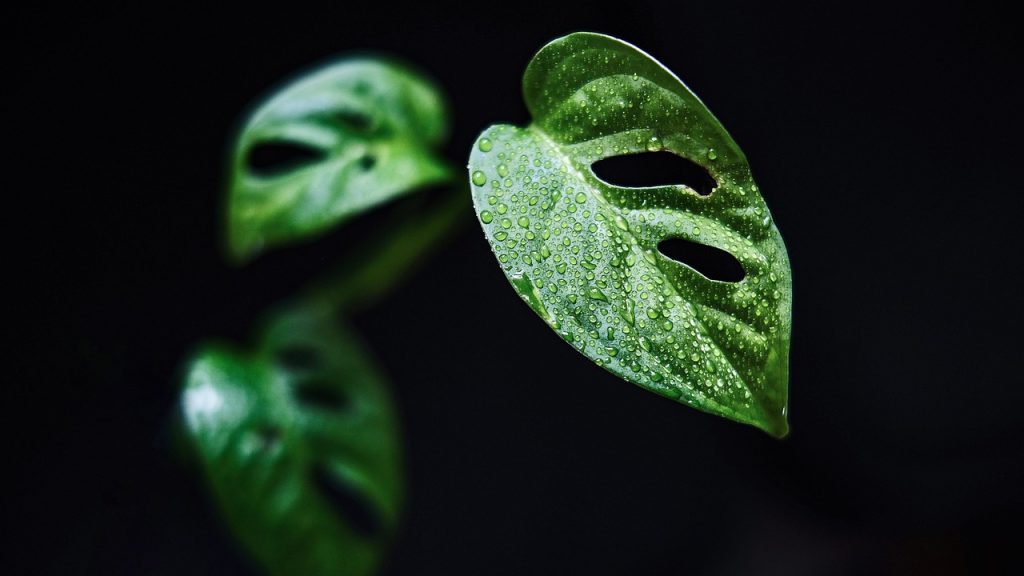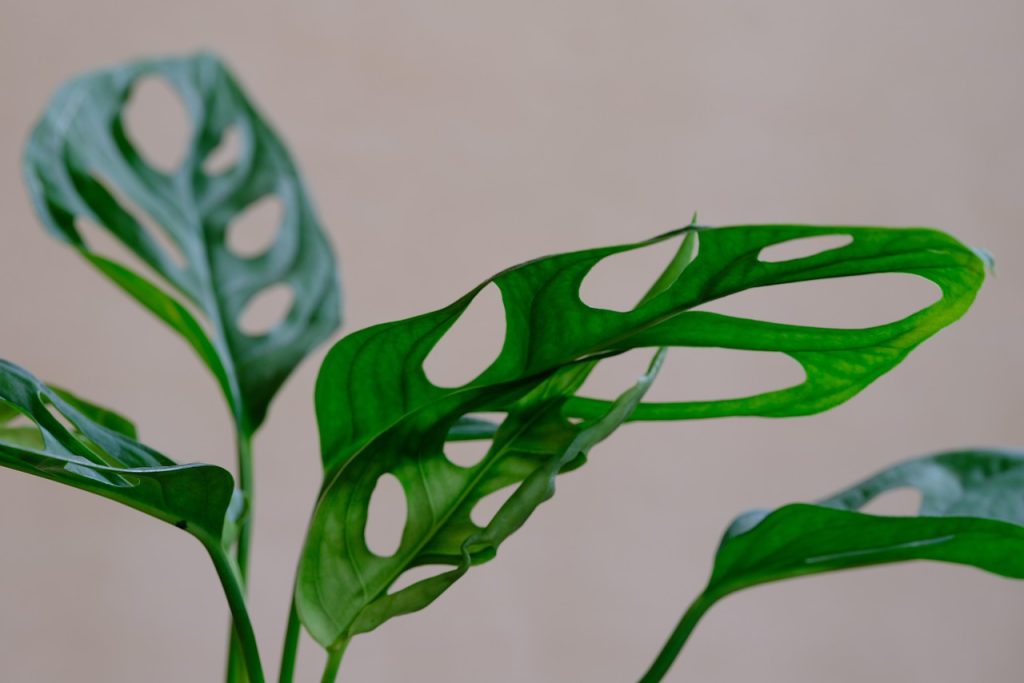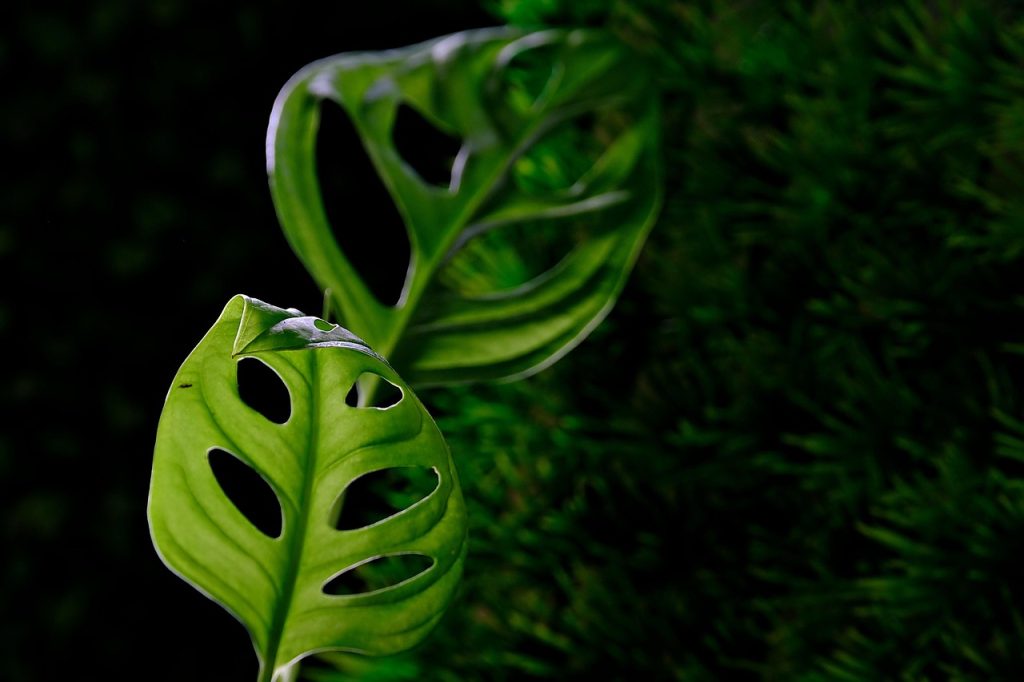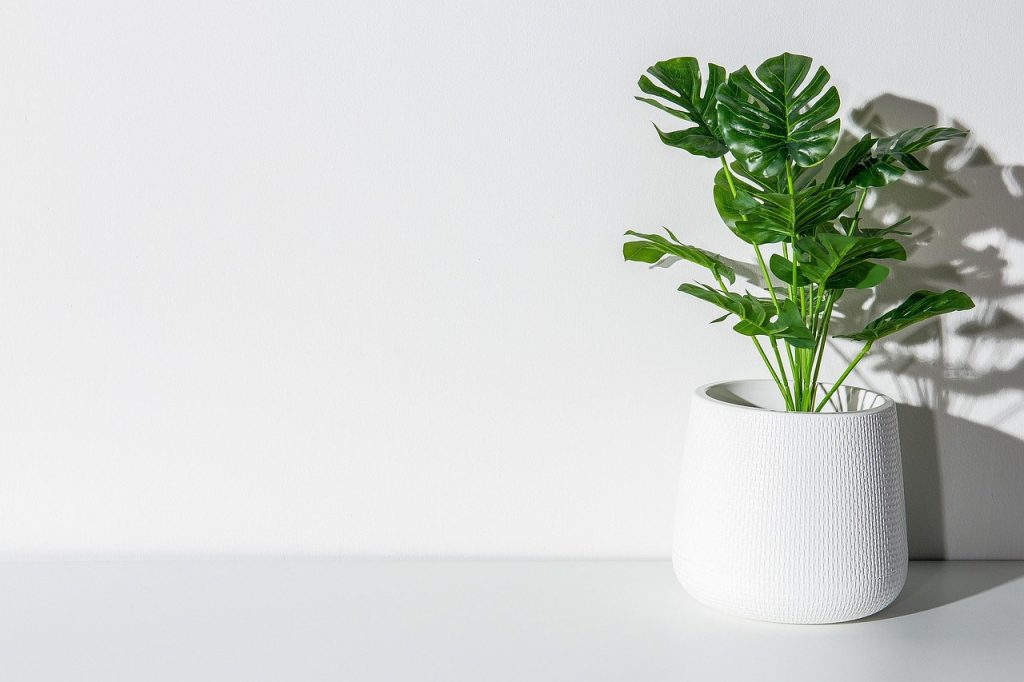The Monstera plant care, often called the Swiss Cheese Plant, is a tropical beauty loved for its large, split leaves and bold green presence. Perfect for homes, offices, or indoor gardens, it’s a favorite among plant enthusiasts for its low maintenance and aesthetic appeal.
If you’ve just brought one home or plan to, this detailed monstera plant care guide will help you grow it lush and thriving all year long.

🌱 About the Monstera Plant
The Monstera belongs to the Araceae family and originates from the rainforests of Central and South America. The most common types are Monstera deliciosa and Monstera adansonii, known for their beautiful, naturally perforated leaves.
These holes (called fenestrations) aren’t just for looks — they help the plant capture sunlight efficiently in dense tropical forests.
☀️ Light Requirements for Monstera Plant Care
Monsteras love bright, indirect light — the kind filtered through a curtain or window shade.
- Ideal Spot: Near an east- or south-facing window.
- Avoid: Harsh direct sunlight, which can burn leaves.
- Low Light: They can survive in lower light but may grow slower with smaller leaves and fewer splits.
If your Monstera’s new leaves lack holes, it’s likely not getting enough light.
💧 Watering Your Monstera
One of the most important aspects of monstera plant care is proper watering. Overwatering is the most common mistake.
- When to Water: Water when the top 2 inches of soil are dry.
- Drainage: Always ensure your pot has holes to prevent soggy roots.
- Signs of Overwatering: Yellowing leaves or a musty smell in the soil.
- Humidity: Monsteras love humidity. Mist the leaves 2–3 times a week, especially in dry seasons.
Pro Tip: Use room-temperature filtered water for best results.

🌿 Best Soil Mix for Monstera Plant Care
Monsteras need loose, well-draining soil that retains moisture without staying soggy.
Perfect Soil Recipe:
- 1 part peat moss or coco coir
- 1 part perlite or pumice
- 1 part orchid bark or compost
This mix mimics its natural rainforest habitat and provides airflow to the roots. Repot every 1–2 years to refresh nutrients.
🌡️ Temperature and Humidity Needs
Monsteras thrive in warm, tropical conditions.
- Ideal Temperature: 65°F–85°F (18°C–29°C)
- Humidity: 60%–80% is best.
- Avoid: Cold drafts, heaters, or air conditioners blowing directly.
If your plant’s leaf tips turn brown, it may need more humidity — use a pebble tray or humidifier nearby.
🌼 Fertilizing for Strong Growth
Feed your Monstera regularly during the growing season (spring to early fall).
- Fertilizer Type: Balanced liquid fertilizer (20-20-20) or organic compost.
- Frequency: Every 4–6 weeks in spring and summer.
- Winter: Skip fertilizing when growth slows down.
✂️ Pruning and Cleaning Your Monstera
Pruning keeps your Monstera tidy and encourages new growth.
- Trim yellow, damaged, or old leaves using sterilized scissors.
- Wipe leaves gently with a damp cloth to remove dust and allow better photosynthesis.
- Cut long aerial roots if they’re unruly — or guide them into the soil for extra nutrients.
Adding a moss pole or coco stick helps the Monstera climb naturally, just like in the wild.

🌱 Monstera Propagation Made Easy
Propagating your Monstera is simple and a great way to grow new plants.
How to propagate Monstera:
- Cut a healthy stem just below a node (where a leaf meets the stem).
- Place the cutting in a jar of clean water.
- Change the water every 3–4 days.
- Once roots are 2–3 inches long, transfer them to soil.
Alternatively, you can root the cutting directly in moist soil under indirect light.
⚠️ Common Monstera Plant Problems
| Issue | Possible Cause | Solution |
|---|---|---|
| Yellow leaves | Overwatering | Let soil dry before watering again |
| Brown edges | Low humidity | Mist leaves or use a humidifier |
| Drooping leaves | Lack of water or light | Check soil and lighting |
| Leaves curling | Underwatering or cold | Water and keep warm |
| No leaf splits | Too little light | Move to a brighter spot |
🪴 Monstera Varieties You Can Grow
| Type | Description |
|---|---|
| Monstera deliciosa | Classic variety with large split leaves |
| Monstera adansonii | Smaller heart-shaped leaves with holes |
| Monstera obliqua | Delicate, rare, and thinly fenestrated |
| Monstera Thai Constellation | Cream variegated leaves |
| Monstera siltepecana | Silvery foliage with dark veins |
All follow similar monstera plant care basics, though variegated types need more light.
🏡 Monstera Plant Care Indoors
Monsteras thrive indoors when placed in bright, indirect light with regular humidity. Rotate your plant occasionally to ensure even growth on all sides.
Indoor Tips:
- Use a humidifier during dry seasons.
- Avoid cold windows in winter.
- Wipe leaves monthly for a glossy look.
🌳 Monstera Plant Care Outdoors
If you live in a tropical or warm region (USDA zones 10–12), your Monstera can grow outdoors year-round.
- Choose a spot with partial shade — avoid direct afternoon sun.
- Water more often during summer heat.
- Bring the plant indoors if temperatures drop below 50°F (10°C).
Outdoor Monsteras can grow larger and produce bigger leaves.
🌸 Do Monstera Plants Flower?
Yes, but rarely indoors. Mature Monsteras can produce white spathes resembling peace lily blooms. While not known for fragrance, they’re beautiful and add a tropical touch.

⚠️ Is the Monstera Plant Toxic?
Yes — Monsteras are toxic to cats, dogs, and humans if ingested due to calcium oxalate crystals. Keep them out of reach of pets and small children.
🌿 Benefits of Growing a Monstera Plant
- Improves indoor air quality.
- Adds a stunning tropical aesthetic.
- Reduces stress and boosts mood.
- Easy to propagate and maintain.
Monsteras are perfect for both beginners and experienced plant lovers who want beauty with minimal effort.
❄️ Monstera Plant Care in Winter
Monsteras slow down in winter, so adjust care accordingly:
- Water less frequently.
- Avoid cold drafts.
- Move closer to windows for light.
- Stop fertilizing until spring.
This allows your plant to rest and prepare for new growth in warmer months.
🪵 Monstera vs. Split-Leaf Philodendron
Many confuse Monsteras with split-leaf Philodendrons.
| Feature | Monstera | Philodendron |
|---|---|---|
| Leaf pattern | Has holes (fenestrations) | Only splits, no holes |
| Growth style | Climbing vine | Bushy plant |
| Care level | Moderate | Easy |
🌺 Final Thoughts on Monstera Plant Care
The Monstera plant isn’t just trendy — it’s timeless. With its dramatic leaves and low-maintenance nature, it’s a perfect choice for anyone looking to bring a touch of the tropics indoors.
Follow these simple monstera plant care steps — the right light, proper watering, and humidity — and your plant will reward you with lush, healthy growth for years to come.
🌿 Frequently Asked Questions (FAQs)
Every 7–10 days, depending on humidity and soil dryness.
Yes! Regular misting keeps humidity levels ideal.
It may need more light or time — young plants take a while to develop fenestrations.
Yes, but it will grow slower. Soil provides more nutrients long-term.
It can tolerate low light, but for lush growth, bright indirect light is best.